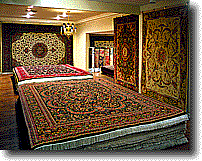As we spend more of our time indoors through the Winter months some of us can develop difficulty dealing with a very low relative humidity environment.
Relative Humidity is the percentage of water vapor in air: the ratio of the amount of water vapor in the air at a given temperature to the maximum amount air can hold at the same temperature, expressed as a percentage. Via http://encarta.msn.com
Winter air, both indoors and out contains less moisture than warmer months making our bronchial and nasal passages more susceptible to irritation caused by common (asthma) triggers-including: dust, smoke, soot and nitrogen dioxide-all commonly found in the home and office.
Special Note: Cleaning of your hard and soft furnishings can help eliminate or reduce the exposure to some triggers. Areas of concern include:
- Drapery
- Upholstery
- Carpeting & Oriental Rugs
- Mattresses and bed covers
- Hardwood flooring-especially under furniture
- Light fixtures
- Fireplaces and surrounding surfaces
- Shelving, wooden furniture & built-ins
To address the lower humidity concerns there are two avenues to explore.
- The DO-IT-Yourself method
- Professional evaluation and equipment
Both involve increasing the Rh (relative humidity) for a constant comfortable environment for home or office. A common DIY method may be a simple as purchasing a humidifier for various rooms throughout your home and adjust according to your families comfort level-this may take some experimentation. If you burn wood during the cold months simply place a pan of water near your fireplace or on top of your wood burning stove-the heat from the fire will evaporate the water and increase the Rh in your home.
Homes and offices with forced hot air circulatory systems should be examined by a professional HVAC Contractor (Heating, Ventilation & Air Conditioning). Most modern systems allow moisture to be introduced in the vent system and sensors control the Rh so as to ensure a comfortable work/living space.




